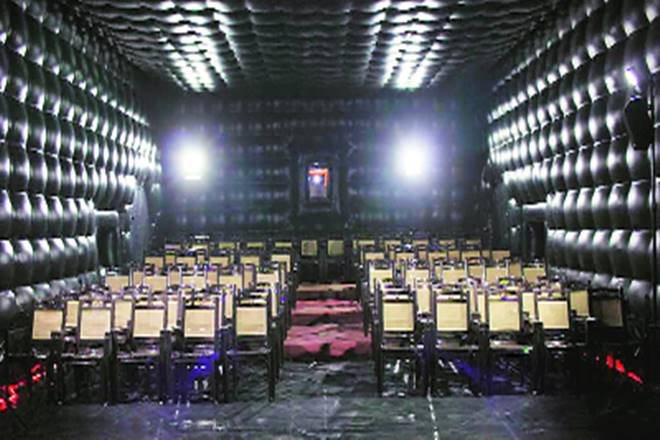Ranchi of the late 70s could boast of only a few hangout spots. One of these was Sujata Cinema, a standalone single-screen theatre, which attracted a massive crowd. Reminiscing about those days, Anand Lal, an alumnus of the city’s St Xavier’s College, says, “The memories we have range from bunking classes to catching the 12 pm show to awkward run-ins with our professors whose classes we had bunked in the past.”
With tickets priced at `5-`12, Sujata Cinema was quite the haunt for anyone who enjoyed movies, popcorn and peppy Bollywood dance numbers.
Over the years, though, the cinema hall lost out to multiplexes and high-definition screens. And this happened not just in Ranchi, but across the country. The hardest hit, however, were small towns and rural areas that lost out on reasonably-priced family entertainment. Twenty-two-year-old Gunjan (who uses one name only), in fact, was a cinema hall novice until she came to the national capital in 2014 from a small village in Jharkhand. In the village, Gunjan could never catch a film in the local theatre, as it only screened C-grade films. “The (cinema) halls around the village were not a good place for us to go. They only showed bad movies. Our parents would scold us if we were ever found around them,” says Gunjan, who works as a domestic help in New Delhi.
This is where the concept of a ‘mobile digital movie theatre’ comes in. As the name suggests, these ready-to-assemble and easy-to-dismantle ‘theatres’ are housed in mobile trucks, which can be driven to any location of one’s choice to screen films. Take, for instance, the mobile theatres of Picture Time, a New Delhi-based mobile digital movie theatre start-up. Their theatres are air-conditioned, fire-proof and weather-proof, and can seat as many as 150 people in one go. A 34-feet LCD screen is mounted horizontally onto the side of the truck, which opens into a tent made of inflatable acoustic panels. The whole set-up takes a team of four-five people about 2.5 hours to raise, says Sushil Chaudhary, CEO, Picture Time, adding that permission must be sought from the authorities, generally district magistrates, to set up the theatre. The screenings, which include regional and Bollywood releases such as Bahubali, Shahenshah, Mr India and Don, are priced at `25-`50 per head. The tickets are available at the counter and can also be bought from the Mobile Digital Movie Theatre app.
“The Indian film industry is no less than Hollywood or that of China, but there is a dearth of movie theatres in the country. Compared to the US and China, there are only around 2,200 multiplexes in India for a population of around 1.3 billion people, which is far below the density in developed countries,” says Chaudhary, adding that they have around 35 mobile theatres so far, with plans to have another 120 by the end of the year. “We provide family entertainment for the public to come out and have fun,” says Chaudhary, revealing that 55-80% of the seats are sold for every film they screen. The response, he says, has been very encouraging. “People walk out as they do from any regular multiplex after enjoying a movie… but since these viewers live in regions without good multiplexes, they seem happier and overwhelmed,” he says.
The project, which saw light of the day during the 2015 International Film Festival of India in Goa, has already made inroads into more than eight states—Andhra Pradesh, Odisha, Chhattisgarh, Uttar Pradesh, Jharkhand, Telangana, Haryana, Karnataka, etc—and close to 70 cities. “Our aim is to first penetrate regions that are under-screened before moving on to other places. We usually select a region based on this criteria and include regional shows/releases in Marathi, Bengali, etc, along with Bollywood movies,” he says.
Picture Time, which earns revenue through ticket sales and advertisements, is also open to collaborating with educational institutes, private organisations and the government to share their platform to screen public service messages. In the past, screenings of movies such as Toilet: Ek Prem Katha and Padman in rural areas have been well received, initiating a dialogue in the panchayats and communities, says Tripti Chatterji, a Lucknow-based Mahila Samakhya (a government rural welfare programme) officer who has been working for rural welfare since the past 30 years.
Meanwhile, the Hindi film industry, too, has shown interest in Chaudhary’s project. Director and actor Satish Kaushik, who watched Bahubali 2 last year in their mobile theatre, was hugely impressed by the picture and sound quality. So much so that last month he launched his own mobile theatre initiative. Inaugurated by Delhi’s chief minister Arvind Kejriwal, Kaushik’s initiative aims to increase the number of screens in the country. The makeshift cinema halls will have a 22-feet screen with Dolby Digital 5.1 surround sound, air-conditioning and seating for around 200 people per screening. As per reports, Kaushik’s team is also in talks with BookMyShow, an online movie ticket aggregator and retailer, to make tickets available on their site.
Kaushik says he wants to provide entertainment across the country, especially where it’s not easily accessible. He also believes that these mobile theatres are great to screen movies by new talent. “In India, multiplex ticket prices are high. Therefore, people are a bit hesitant. Why would people pay such high prices for a newcomer’s film when they can watch a Shah Rukh Khan film at the same price? The moving cinema may change that,” he says.
